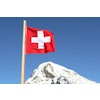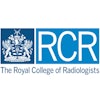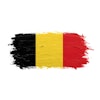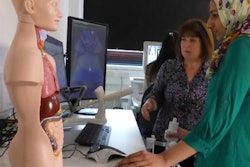
The shortage of radiologists in the U.K. is getting worse, according to a census released by the Royal College of Radiologists (RCR) on 10 September. Demand for imaging services increases, but the supply of radiologists does not. A key finding is that 99% of U.K. radiology departments could not meet scan and x-ray reporting demands.
The RCR polled all 202 National Health Service (NHS) radiology departments and received a 100% response rate, asking questions related to workforce and workload. It found an increase in demand for radiology services but a decrease in the number of radiologists available to perform such services.
"These latest findings show that our services are on their knees, and there is currently no light at the end of the tunnel," said RCR President Dr. Giles Maskell. "Without immediate measures to alleviate the pressures, patients will wait even longer for the results of their x-rays and scans. Diseases such as cancer may go undiagnosed or get worse and become untreatable, and patients will endure long periods of unnecessary anxiety."
The problem
The latest RCR census adds to a string of evidence that the radiologist shortage in the U.K. is untenable. For instance, between 2012 and 2015, the consultant radiologist workforce grew by 5%, but the number of CT and MRI scans rose by 29% and 26%. The situation is starker in Scotland, where the workforce grew by 3% but the number of CT and MRI scans rose by 55%.
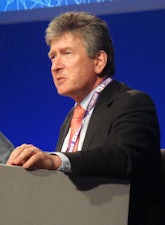 Urgent action is required or patients will wait even longer for their imaging results, Dr. Giles Maskell said.
Urgent action is required or patients will wait even longer for their imaging results, Dr. Giles Maskell said.Nearly all (99%) of the radiology departments in the U.K. stated they were unable to meet their diagnostic reporting requirements in 2015, the RCR reported. Around 230,000 patients in England are waiting more than a month for the results of their imaging tests.
"This points to an insufficient number of radiologists to meet the ever-increasing demand for imaging and diagnostic services," the RCR said. "When consultants, trainees, and other grades are taken into account, the U.K. has seven radiologists per 100,000 people, which is the third lowest of 31 European countries for which this data is available."
In addition, 9% of consultant radiologist posts were vacant in 2015. In years past, the rate has fluctuated between 7% and 12%, with 9% being the mean. The figures suggest 1 in 10 radiology posts will remain vacant for the foreseeable future. Half of all advertised unfilled posts result in a failure to appoint, because no suitable candidates are identified or none apply, the RCR said. Also, 41% of posts have been vacant for a year or longer.
"There is evidence that some radiology departments have forsaken their recruitment efforts, believing that they are unlikely to succeed in appointing a new consultant member of staff," the RCR added.
Other key findings of the census include the following:
- 75% of departments outsourced some of their reporting work to commercial companies.
- 92% paid radiologists overtime to report outside of contracted hours.
- Last year the NHS spent 88.2 million pounds (103 million euros) on outsourcing radiology reporting, an increase of 51% from the year before. The amount spent in 2015 could have paid for more than 1,000 full-time consultant radiologists.
"Urgent action is required from the government and NHS leadership," Maskell stated. "We need their help to bring in more radiologists from overseas, to increase the numbers of radiologists in training, and to approve the modest investment needed to introduce new models of training and service delivery. Without that, the current failures to meet cancer diagnosis targets will only get worse and the ambition in England for a 28-day test-to-result target for the diagnosis of cancer will remain a distant prospect."
To read the full report, visit the RCR website.
